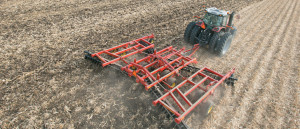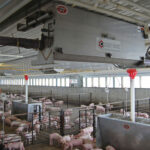New Full-tilt Tillage Tools Hit Market
Manufacturers are switching their focus from moisture conservation implements to full-tilt tillage tools as waterlogged fields become the muddy new norm rather than the exception. In response to farmer demand, Sunflower introduced two new implements in September: the 6650-48 vertical...
New Full-tilt Tillage Tools Hit Market
Manufacturers are switching their focus from moisture conservation implements to full-tilt tillage tools as waterlogged fields become the muddy new norm rather than the exception. In response to farmer demand, Sunflower introduced two new implements in September: the 6650-48 vertical...Manufacturers are switching their focus from moisture conservation implements to full-tilt tillage tools as waterlogged fields become the muddy new norm rather than the exception.
In response to farmer demand, Sunflower introduced two new implements in September: the 6650-48 vertical tillage tool and two split-wing 1436 disc harrows.
Dennis Lewallen, chief engineer on both cultivator projects, said there are valid reasons why farmers are adding tillage implements to their equipment lineups.
The bottom line is that zero tillage has inadvertently created four distinct problems for farmers that only tillage can fix:
 “We’re seeing a lot more herbicide problems,” Lewallen said.
“We’re seeing a lot more herbicide problems,” Lewallen said.
“More weeds are becoming resistant to chemicals, so some form of tillage is necessary.”
Weed specialists in the northern Great Plains states and across the prairie provinces are nearly unanimous in their belief that glyphosate was too easy to use and farmers came to rely on it too much. Herbicide resistance is the ugly result.
Many regions have had almost a decade of above-average rainfall, but some farmers are still adjusting to the idea that they should do everything possible to conserve soil moisture. Those waterlogged fields need tillage to dry the soil.
Tire ruts have become another big factor because of the mud, and tire ruts don’t take care of themselves.
However, it’s not only muddy conditions that call for surface tillage. Depending on soil type, long-term zero till fields can develop a rough surface that’s hard on sprayers and combines.
Many zero-till producers are beginning to realize that the frost they once figured would break up soil compaction isn’t doing the bang-up job they assumed it would.
Read the full article on The Western Producer.



